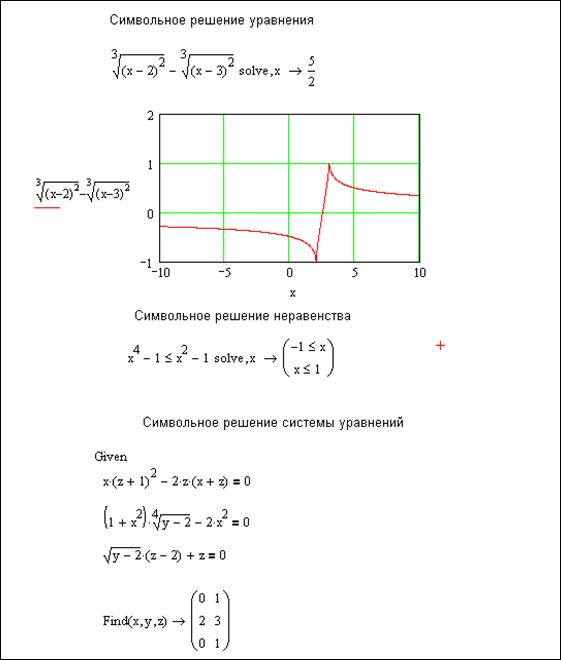
Increasing the tolerance changes what Mathcad considers close enough to call a solution. Try defining TOL with a larger value somewhere above the solve block. It may not be possible to solve the constraints to within the desired tolerance.Again, try changing the initial guesses or adding an inequality to avoid the undesirable stopping point. The solver may have become trapped on a point that is not a local minimum, but from which it cannot determine where to go next.To find the actual solution, try using different starting values or add an inequality to keep Mathcad from being trapped in the local minimum. The solver may have become trapped in a local minimum for the error values.If the solution for a variable is complex, the solver will not find it unless the starting value for that variable is also complex.


Mathcad does not allow the following inside a solve block: The types of allowable constraints are z = w, x > y, x < y, x ³ y and x £ y. Mathcad is very specific about the types of expressions that can appear between Given and Find. For one equation in one unknown, you can also use the root or polyroots functions. The word Given, the equations and inequalities that follow, and the Find function form a solve block.Įxample 1 shows a worksheet that contains a solve block for one equation in one unknown. Like given, you can type Find or find in any style. You can’t put numerical values in the list of unknowns: for example, Find(2) in Example 1 isn’t permitted. Finally, type the Find function with your list of unknowns.

Type the equations and inequalities in any order below the word Given. Just don't type it while in a text region.ģ. You can type Given or given in any style.

This tells Mathcad that what follows is a system of equality or inequality constraints. Use complex guess values if you anticipate complex solutions use real guess values if you anticipate real solutions.Ģ. These give Mathcad a place to start searching for solutions. Provide initial guesses for all the unknowns you intend to solve for. There are four steps to solving a system of simultaneous equations:ġ. To solve an equation symbolically, that is, to find an exact numerical answer in terms of elementary functions, choose Solve for Variable from the Symbolic menu or use the solve keyword. (For Mathcad Standard, the upper limit is 50 equations in 50 unknowns.) If you aren’t sure that a given system possesses a solution but need an approximate answer which minimizes error, use Minerr instead.
#POLYROOTS MATHCAD PROFESSIONAL#
Example 4: A solve block for computing the square root of a matrix.Įxample 5: A solve block for computing the solution of a matrix equation.Ĭomments Mathcad Professional lets you numerically solve a system of up to 200 simultaneous equations in 200 unknowns.


 0 kommentar(er)
0 kommentar(er)
